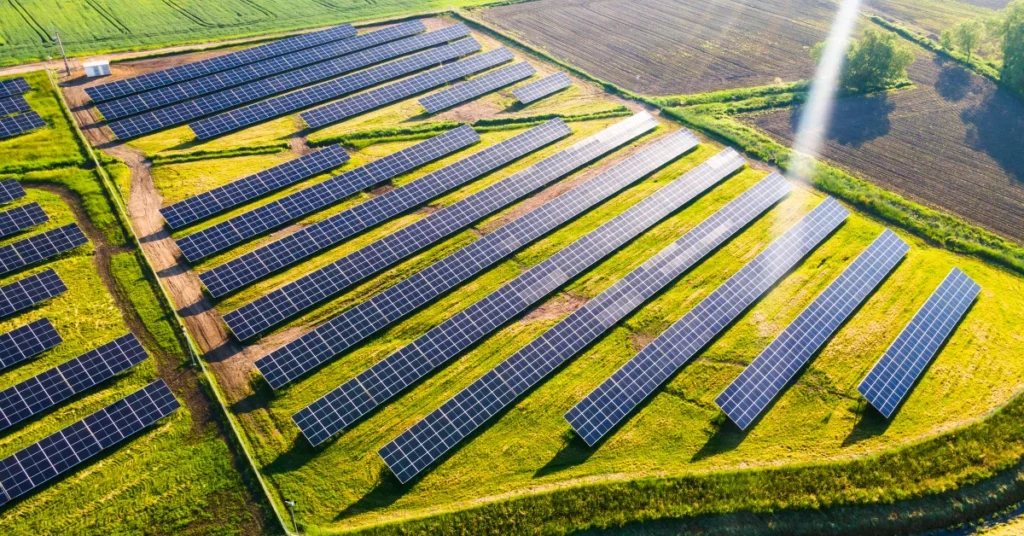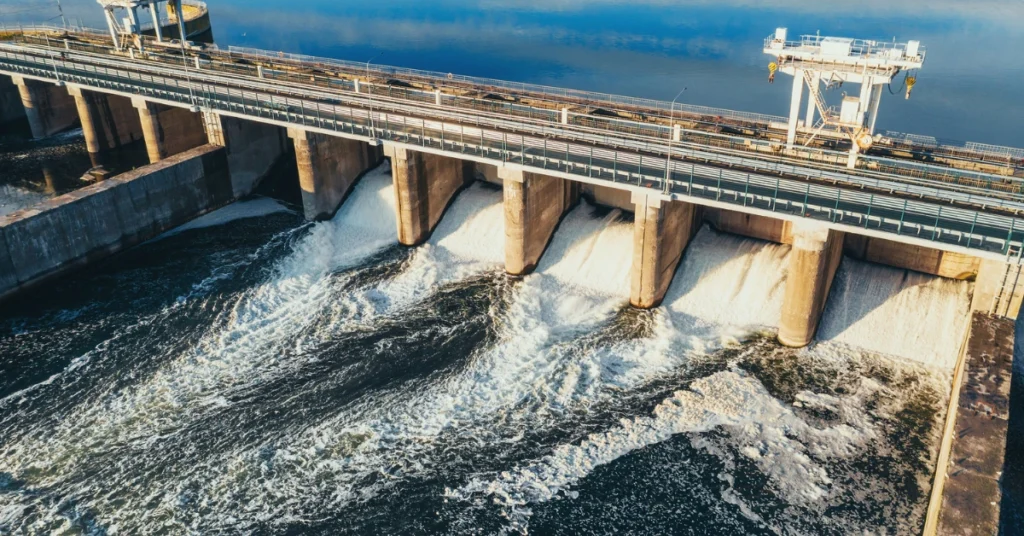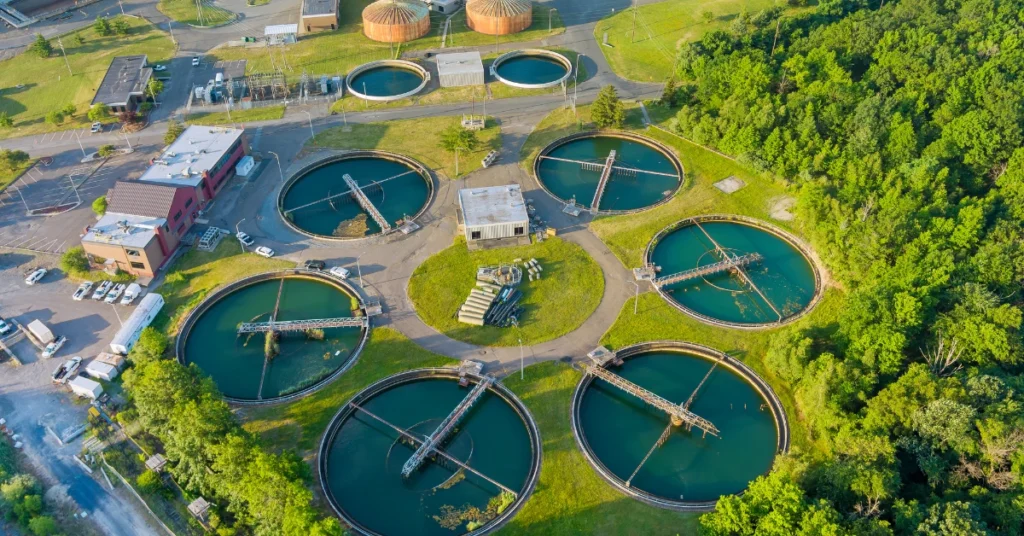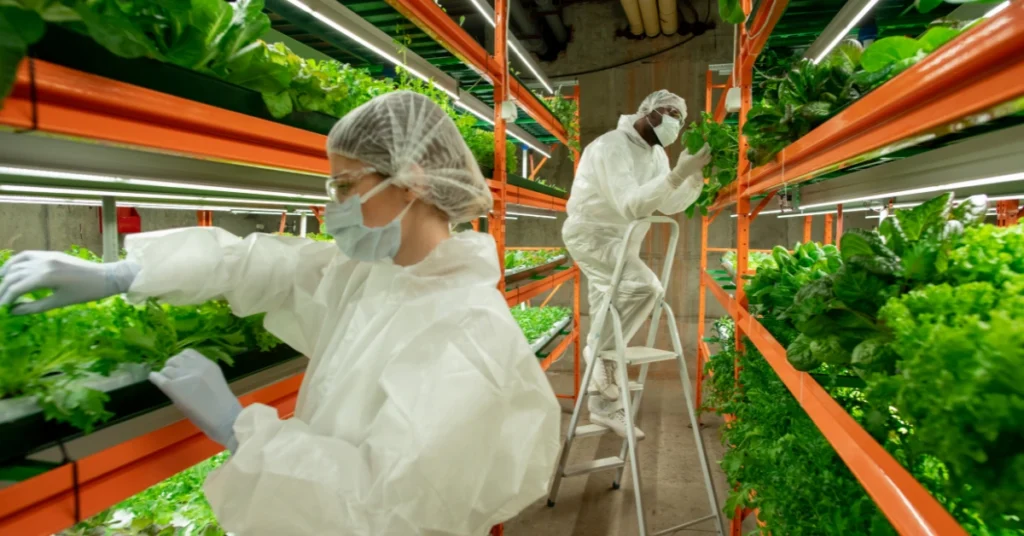With the urgent need to combat climate change, technology has become an essential driver for sustainable development. From renewable energy to advanced urban farming, a range of tech innovations are not only enhancing our quality of life but also paving the way toward a greener, more resilient planet. Below, we dive into ten groundbreaking technologies that are transforming the sustainability landscape and supporting eco-conscious practices across the globe.
1. Renewable Energy Technologies
Renewable energy is a cornerstone of sustainability, allowing us to harness clean, inexhaustible power from natural sources like the sun, wind, and water. The evolution of renewable energy technologies has introduced innovative ways to generate electricity, minimize waste, and reduce our carbon footprint significantly.
Solar Power
Solar energy is one of the most accessible and widely-used renewable sources. With advancements in photovoltaic (PV) technology, modern solar panels are more efficient and affordable than ever. Additionally, companies like Tesla with their Solar Roof and SunPower offer homeowners sleek and effective solar solutions that seamlessly integrate with home designs. By leveraging solar energy, we reduce reliance on fossil fuels and make strides toward a sustainable future.

Wind and Hydroelectric Power
Wind energy is an equally promising field, with offshore wind farms playing a critical role in renewable energy infrastructure. The World Economic Forum reports that global offshore wind capacity is expected to increase significantly, providing more green power to coastal cities. Hydroelectric power remains another major renewable resource, offering efficient energy generation and storage, especially in countries like Norway and Brazil, where water resources are abundant.
Innovations in Energy Storage
To maximize the efficiency of renewable energy, advances in energy storage technologies, such as lithium-ion batteries and new solid-state battery systems, play a critical role. Leading innovators like Tesla’s Powerwall are enabling homeowners to store solar energy for use during non-sunny hours, ensuring a continuous power supply and reducing grid dependency. By incorporating robust energy storage solutions, renewable sources become more viable and reliable for everyday use.
2. Smart Grid Innovations
Smart grids are revolutionizing energy management, allowing efficient distribution and monitoring of electricity in real-time. Unlike traditional power grids, smart grids use two-way communication between consumers and suppliers, optimizing energy usage and minimizing wastage. This technology also enables the integration of renewable sources into urban electricity networks, supporting sustainable energy distribution.
Real-Time Energy Monitoring
Real-time energy monitoring provides essential insights into consumption patterns, helping both consumers and utilities make smarter energy decisions. Companies like IBM and General Electric are leaders in smart grid technology, enabling cities and organizations to efficiently manage and forecast electricity demand. This technology also empowers consumers by offering apps and tools to track and reduce their energy usage in real time.
Enhanced Grid Reliability and Security
Smart grids are built with resilient infrastructure that quickly detects and resolves outages, reducing downtime and enhancing grid stability. For instance, The U.S. Department of Energy highlights how smart grids can reroute power during outages to ensure critical services remain functional, minimizing the impact of disruptions. Additionally, cybersecurity protocols are integrated within smart grids to protect against cyber threats, ensuring a secure energy supply.
Incorporating Renewable Energy Sources
Smart grids facilitate the seamless integration of renewable energy sources, allowing energy generated from solar and wind to be stored and distributed more effectively. This advancement supports a decentralized, sustainable energy model, where households and businesses with solar panels or small wind turbines can contribute excess energy back to the grid. According to Smart Energy Decisions, such integration is essential for creating resilient, eco-friendly urban infrastructures that benefit both the environment and communities.

3. Carbon Capture and Storage (CCS)
As the world confronts the impact of greenhouse gases, Carbon Capture and Storage (CCS) technology has emerged as a powerful tool for reducing carbon emissions. CCS works by capturing CO2 emissions from industrial processes, transporting them to storage sites, and storing them underground in geological formations. This innovative technology is essential for heavy industries like cement and steel production, which have historically high carbon footprints.
How CCS Works
The CCS process involves three main steps: capturing carbon dioxide at the emission source, transporting it via pipelines or ships, and securely storing it in depleted oil fields or other underground formations. According to the Global CCS Institute, this technology has the potential to reduce CO2 emissions by up to 90% in certain industrial processes, making it an effective solution for industries that cannot fully transition to renewable energy.
Recent Advancements and Adoption
Significant advancements in CCS technology have made it more efficient and cost-effective. For example, projects like Norway’s Northern Lights project are leading the way in large-scale carbon storage, setting a benchmark for future CCS initiatives. Additionally, countries like Canada and the United Kingdom are investing heavily in CCS infrastructure to meet their emission reduction goals.
Challenges and Opportunities
While promising, CCS faces challenges, including high costs and the need for regulatory support to encourage widespread adoption. However, as the world pursues net-zero carbon goals, investments in CCS are expected to increase, with IEA predicting substantial growth in CCS applications by 2050. By tackling emissions directly at the source, CCS offers a promising path to achieving global climate goals.

4. Electric and Hydrogen-Powered Transportation
Transportation contributes significantly to global greenhouse gas emissions, and innovative technologies like electric and hydrogen-powered vehicles are vital for reducing the environmental impact of this sector. From electric cars to hydrogen fuel cell buses, these advancements are shaping the future of sustainable mobility.
Electric Vehicles (EVs)
Electric vehicles (EVs) are gaining widespread adoption due to their lower emissions and operational costs. Major car manufacturers, such as Tesla and BMW, are pushing the boundaries of EV technology, introducing models with extended battery life, faster charging times, and enhanced safety features. EV infrastructure, like rapid-charging stations, is also expanding globally, making EVs more accessible and practical for everyday use.
Hydrogen Fuel Cell Technology
Hydrogen fuel cell vehicles, like those pioneered by Toyota’s Mirai, offer a zero-emission alternative to traditional cars, emitting only water vapor. These vehicles are especially useful for heavier transportation needs, such as buses and trucks, due to their longer range and faster refueling times compared to EVs. As the International Energy Agency notes, hydrogen fuel cells could play a crucial role in decarbonizing sectors that are hard to electrify.
Impacts on Air Quality and Urban Environments
The shift to electric and hydrogen-powered vehicles significantly reduces air pollutants, leading to cleaner and healthier urban environments. For example, cities like London and Amsterdam are investing in low-emission zones and electric public transport to cut emissions. By transforming urban transportation, these technologies contribute to cleaner air, less noise pollution, and an improved quality of life for city dwellers.

5. Sustainable Building Technologies
Buildings account for a significant portion of global energy use and carbon emissions, making sustainable building technologies essential for reducing environmental impact. Innovations in materials, design, and energy efficiency are transforming how we construct and maintain buildings, especially in urban areas.
Eco-Friendly Building Materials
The use of sustainable materials like bamboo, recycled steel, and low-carbon concrete reduces the environmental footprint of new construction projects. Organizations like LEED (Leadership in Energy and Environmental Design) provide certifications for green building practices, encouraging the adoption of sustainable materials and techniques worldwide.
Smart Building Systems
Smart buildings use IoT sensors and automation to optimize energy usage, including heating, cooling, and lighting. For example, Siemens offers comprehensive smart building solutions that enhance energy efficiency and reduce waste. These systems adjust to real-time data, helping businesses lower costs and reduce their carbon footprint.
Urban Applications and Sustainable Architecture
Cities are increasingly adopting sustainable architecture, focusing on green roofs, vertical gardens, and natural ventilation to lower energy consumption. Examples include Singapore’s CapitaGreen and New York’s Bryant Park Corporation, which have implemented designs that integrate greenery and renewable energy. By fostering green building practices, urban areas can significantly reduce their environmental impact while enhancing residents’ well-being.
6. Waste-to-Energy Conversion
As urban populations grow, managing waste sustainably becomes increasingly critical. Waste-to-energy (WtE) technologies convert municipal solid waste into usable energy, reducing landfill use and creating a renewable power source that benefits cities worldwide.
How Waste-to-Energy Works
Waste-to-energy plants incinerate waste at high temperatures, converting it into electricity or heat. According to the U.S. Environmental Protection Agency, this process reduces waste volume by up to 90% while producing usable energy, making it an effective solution for waste management and energy generation.
Environmental and Economic Benefits
WtE facilities help decrease landfill use, lower methane emissions, and provide an alternative energy source, benefiting both the environment and the economy. Countries like Sweden have embraced WtE technology, so much so that they import waste from other countries to keep their WtE plants operational, as reported by The Independent. This sustainable approach to waste management generates revenue and reduces dependence on fossil fuels.
Challenges and Future Directions
Despite its benefits, waste-to-energy faces challenges, including high initial costs and concerns about emissions. However, advancements in WtE technology are addressing these concerns, making it a cleaner and more efficient process. For cities seeking sustainable waste management solutions, WtE remains a viable and promising option for the future.

7. Water Purification and Conservation Technologies
Water scarcity is a growing concern globally, with clean and accessible water resources becoming increasingly limited. Technological advancements in water purification and conservation are playing a critical role in ensuring sustainable water access, especially in urban and arid regions.
Innovative Water Purification Techniques
Modern purification methods like membrane filtration, UV treatment, and reverse osmosis are highly effective at removing contaminants. For example, the World Health Organization promotes these technologies for safe drinking water, which is essential for public health. Additionally, solar-powered purification devices are emerging as sustainable solutions for remote or resource-limited areas.
Smart Water Management Systems
Smart water management utilizes IoT and AI to monitor water usage, detect leaks, and optimize water distribution. Cities like Sydney have implemented these systems to reduce water wastage, saving millions of gallons annually. By leveraging real-time data, municipalities and homeowners can make more informed decisions to conserve water.
Impact on Agriculture and Urban Areas
With agriculture being a major water consumer, efficient irrigation and water recycling technologies are vital. Innovations such as precision agriculture help farmers reduce water usage while maintaining crop yields. Similarly, urban areas are benefiting from water-saving systems in residential and commercial buildings, ensuring sustainable water availability for growing populations.

8. Urban Vertical Farming and Agri-Tech Solutions
With limited arable land and rising food demands, urban vertical farming and agri-tech innovations are transforming how cities grow food. These technologies promote local food production, reduce transport emissions, and make efficient use of urban space.
Vertical Farming and Hydroponics
Vertical farming involves stacking plants in indoor environments using controlled lighting and hydroponic systems, which require less water and soil. Companies like Plenty and AeroFarms are pioneers in this space, growing fresh produce with fewer resources and minimal environmental impact. Vertical farms are especially valuable for urban areas with limited green space.
AI and Robotics in Agriculture
AI and robotics are streamlining agricultural processes by monitoring plant health, optimizing resource usage, and automating tasks. For instance, John Deere’s precision agriculture solutions use advanced sensors and machine learning to maximize yields while minimizing environmental impact. This technology is critical for sustainable food production in high-density areas.
Community Benefits and Environmental Impact
Urban farming projects not only provide local food but also foster community engagement and education about sustainable practices. Cities like New York and Singapore are leaders in promoting urban agriculture, turning unused spaces into productive green areas. These initiatives contribute to food security, reduce carbon footprints, and improve urban biodiversity.

9. AI for Environmental Monitoring and Conservation
Artificial Intelligence (AI) is emerging as a powerful tool for environmental monitoring, aiding in pollution control, wildlife conservation, and climate risk management. AI-driven solutions offer precision and scalability, making conservation efforts more efficient and data-driven.
Pollution and Air Quality Monitoring
AI-enabled sensors are now used in cities to monitor air quality in real time, providing valuable insights into pollution sources and levels. The U.S. Environmental Protection Agency and private companies like BreezoMeter utilize AI to create accurate air quality maps, helping citizens and policymakers take preventive measures to improve air health.
Wildlife Conservation and Habitat Mapping
AI aids in tracking endangered species and monitoring their habitats. Technologies like Conservation AI use image recognition to detect and protect wildlife, while satellite data provides insights into habitat changes. By using AI, conservationists can make data-driven decisions to safeguard biodiversity and prevent habitat destruction.
Climate Prediction and Disaster Response
AI-based models are used to predict extreme weather events and assess climate risks. Companies like IBM’s Climate Change AI provide forecasts and simulations, allowing governments to prepare and respond to disasters. These insights are critical in reducing the loss of lives and infrastructure during events like hurricanes, wildfires, and floods.
10. Biodegradable and Recyclable Packaging Innovations
With plastic pollution being a critical environmental issue, innovative packaging solutions that focus on biodegradable and recyclable materials are becoming essential for sustainable development. These new materials provide alternatives to traditional plastics, reducing waste and environmental impact.
Biodegradable Materials
Biodegradable packaging materials, such as those made from corn starch, algae, and seaweed, break down naturally and do not leave toxic residues. Companies like Notpla are pioneering seaweed-based packaging, creating eco-friendly alternatives to single-use plastics. By using biodegradable packaging, companies can reduce waste significantly and minimize their environmental footprint.
Recyclable and Compostable Options
Recyclable packaging solutions use materials like recycled paper, glass, and certain plastics designed for easy recycling. Brands such as Loop are innovating in reusable packaging systems, where customers return containers for cleaning and reuse. This shift to recyclable and reusable solutions is creating a circular economy that reduces dependency on raw materials.
Consumer and Market Impact
Consumers are increasingly demanding sustainable packaging, influencing brands to adopt eco-friendly practices. For instance, large companies like Nestlé and Unilever have committed to using 100% recyclable or compostable packaging by 2025. This trend aligns with the growing market for green products, promoting a shift towards sustainable consumer behavior.

11. Blockchain for Supply Chain Transparency
Blockchain technology provides a transparent and traceable system that ensures supply chain integrity, promoting sustainable sourcing and reducing environmental impact. With blockchain, consumers and businesses can track products from origin to final sale, ensuring ethical practices at each step.
Tracking and Accountability
Blockchain offers a decentralized ledger that records every step in the supply chain, from sourcing raw materials to production and distribution. For example, IBM’s Food Trust platform enables companies to verify product origin, ensuring sustainable and ethical sourcing. This transparency helps reduce deforestation, overfishing, and unfair labor practices by holding companies accountable.
Applications in Various Industries
Industries such as fashion, food, and electronics are adopting blockchain to provide transparency and build consumer trust. For instance, Provenance is a blockchain solution used by clothing brands to verify sustainable sourcing, appealing to eco-conscious consumers. By verifying products’ origins and sustainability, blockchain enhances accountability across diverse sectors.
Environmental and Ethical Benefits
Blockchain’s traceability reduces environmental impacts by preventing illegal logging, mining, and other harmful practices. Companies implementing blockchain can make more sustainable choices, promoting a global shift towards eco-friendly sourcing. This technology ensures that every product’s journey aligns with ethical and environmental standards.

12. Green Cloud Computing and Data Centers
The rapid growth of cloud computing has led to a rise in energy demand from data centers. Green cloud computing focuses on powering these facilities with renewable energy, improving energy efficiency, and reducing the carbon footprint of digital infrastructure.
Renewable-Powered Data Centers
Leading tech companies like Microsoft and Google are setting ambitious goals to power their data centers entirely with renewable energy. Microsoft, for example, plans to be carbon negative by 2030, showcasing a strong commitment to sustainable cloud computing. These renewable-powered facilities minimize environmental impact and promote cleaner energy use in the tech industry.
Energy-Efficient Computing
Green cloud computing emphasizes optimizing server operations to minimize energy waste. Technologies like virtualization and cooling innovations reduce energy consumption by maximizing the use of each server. Companies like Amazon Web Services employ energy-efficient designs, helping clients reduce their digital carbon footprint while benefiting from scalable cloud services.
Impact on Global Emissions
With data centers accounting for nearly 1% of global electricity demand, green cloud initiatives are essential for reducing emissions from the tech sector. The shift toward renewable-powered, energy-efficient data centers plays a significant role in lowering global emissions, fostering sustainable technology practices that benefit both businesses and the environment.

Conclusion
The innovations highlighted above are transforming the landscape of sustainable technology, from renewable energy and smart grids to green cloud computing. As these technologies evolve, they bring us closer to achieving a future that balances economic growth with environmental responsibility. By embracing these advancements, individuals, businesses, and cities worldwide can contribute to a sustainable future, supporting a cleaner, greener planet for generations to come.






















